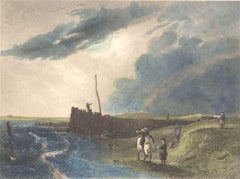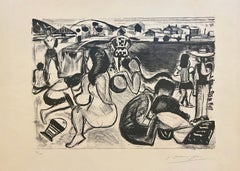John Cousen Art
John Cousen was articled to John Scott, the animal engraver. His larger works after Turner and others are of great excellence, but his exquisite taste is best displayed in his smaller plates after Turner, that is full of poetic feeling. He died in south London in 1880 but had retired from the practice of his art some 16 years before, in consequence of ill-health. This work was an original from the painting The Old Pier at Littlehampton realized by the English painter Sir Augustus Wall Callcott. Student of J. Hoffner was a good portraitist, but he is above all known for his landscapes, which gave him the name of "Claude Lorrain English."
Mid-19th Century John Cousen Art
Lithograph
Mid-20th Century Cubist John Cousen Art
Lithograph
1980s Contemporary John Cousen Art
Lithograph
1840s English School John Cousen Art
Paper, Lithograph
1980s Contemporary John Cousen Art
Lithograph
1980s Realist John Cousen Art
Lithograph
1930s American Modern John Cousen Art
Lithograph
1970s Modern John Cousen Art
Paper, Lithograph
1930s American Modern John Cousen Art
Lithograph
Mid-20th Century Abstract Expressionist John Cousen Art
Engraving, Lithograph
1980s Abstract John Cousen Art
Lithograph
1980s Abstract John Cousen Art
Lithograph
Mid-20th Century Other Art Style John Cousen Art
Lithograph


